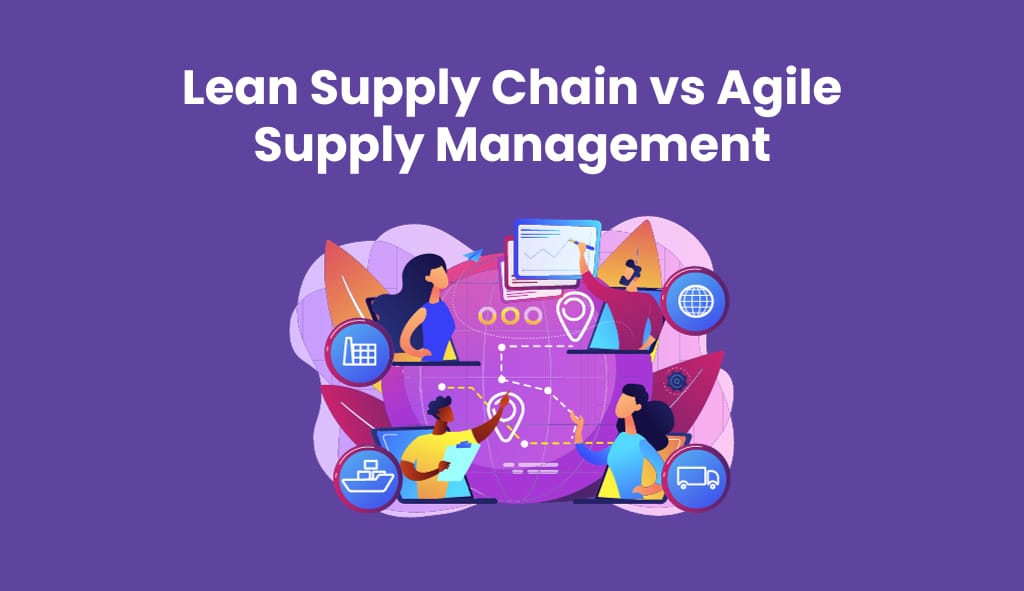Supply Chain Management is the foundation of organizations in a variety of industries. It involves coordinating, optimizing, and continuously developing processes to establish an uninterrupted flow of products and services from manufacturers to end consumers.
To effectively manage supply chains, one must have a thorough knowledge of various strategies and methodologies. This is where Supply Chain Management Courses come into play, as they provide individuals with an in-depth understanding of the different Types of Supply Chain Management approaches and the skills required to propel organizations forward.
We must first understand Supply Chain Management before discussing Lean and Agile while also focusing on Types of Supply Chain Management to compare Lean Supply Chain with Agile Supply Management and see when and where they excel in supply chain dynamics.
Table of Contents
- Understanding Lean Supply Chain
- Exploring Agile Supply Management
- Lean vs. Agile: Key Differences
- Implementing Lean and Agile Strategies
- Conclusion
Understanding Lean Supply Chain
The approach of Lean Supply Chain Management is based on minimizing waste and increasing efficiency. It optimizes resource allocation, removes non-value-added tasks, and streames processes. The Toyota Production System revolutionized lean methodology, which emphasizes delivering value to consumers while reducing waste. Its fundamental ideas are Value Stream Mapping, Pull Systems, Just-in-Time (JIT) Production, and Continuous Improvement (Kaizen). When applied as a whole, these concepts provide advantages like lower costs, more effectiveness, and higher quality. Lean Supply Chain does not, however, come without difficulties. It occasionally finds it difficult to adjust to quickly evolving markets, and an overemphasis on optimization can make supply networks more susceptible to interruptions.
Understanding Agile Supply Management
The key to agile supply chain management is adaptation and response. It’s a technique designed to thrive in dynamic and unexpected circumstances, such as those found in technology and fashion. Flexibility, tight communication with suppliers and partners, quick decision-making processes, and the capacity to customize products to meet unique consumer requests are key elements of the Agile Supply Chain. The benefits of Agile Supply Chain Management are numerous, with quick reaction times, improved customer satisfaction, and an innovative culture topping the list. However, it is also necessary to recognize the difficulties. Because of the necessity for spare capacity and inventory to accommodate rapid changes, Agility might come at a higher cost.
Lean vs. Agile: Key Differences
After thoroughly understanding Lean Supply Chain and Agile Supply Management, let’s compare these two essential methodologies. They have different agendas and ideologies, but they both seek to optimize supply chain operations. As was previously said, the three main focuses of lean supply chain management are productivity, waste minimization, and process optimization. It flourishes in stable markets where cost containment and predictability are critical. On the other hand, Agile Supply Management emphasizes flexibility and prompt reaction to ever-changing market conditions. This is the best option when industries need innovation, customization, and quick response times to changes in demand or supply chain interruptions. What’s more intriguing is that these two seemingly incompatible tactics work well together in certain situations.
Implementing Lean and Agile Strategies
Implementing Lean and Agile Supply Chain Management is a strategic decision that demands thorough preparation and implementation. To properly implement these ideas, you must follow an organized approach that is tailored to your organization’s specific needs. The process of implementing Lean begins with a detailed examination of existing supply chain processes. Value Stream Mapping is an excellent method for discovering waste and inefficiencies. After these areas have been identified, they are targeted for improvement utilizing Lean principles such as JIT production and continuous improvement. Agile Supply Management, on the other hand, focuses on developing a flexible infrastructure that can swiftly react to changes. Building good connections with suppliers, improving teamwork, and investing in technology that allows for real-time decision-making are all part of this.
The Importance of Courses in Supply Chain Management
In many different industries, supply chain management is the foundation of business operations. To guarantee the efficient flow of goods and services from producers to final customers, it entails the coordination, optimization, and constant development of processes.
Conclusion
As the supply chain evolves, remaining current on the newest trends and techniques will be critical. Whether you lean towards Lean, embrace Agility, or find a happy medium, remember that the success of your supply chain ultimately depends on your capacity to adapt, innovate, and optimize in an ever-changing world.
More Read On Spero Magazine




